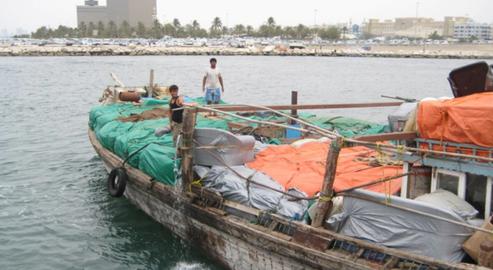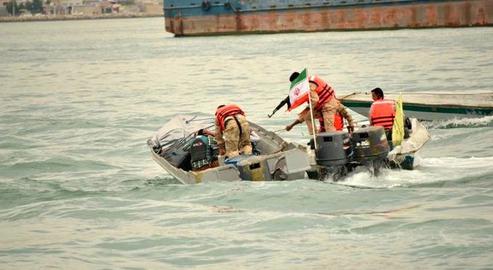Drug trafficking routes involving Iran have latently shifted from land to sea, with more covert shipments now being discovered in the Gulf of Oman than on land. For their part, Iranian officials have sought to shift the blame, claiming: "The imposition of regulations and blockades on the country's eastern borders have led to drug trafficking from the sea".
This change in Iranian drug-traffickers’ methods has taken the Iranian police somewhat by surprise, and law enforcement agencies are struggling with significant deficiencies in their ability to combat it. The issue and its root causes are the focus of an article in the latest edition of Iran’s scientific quarterly, Border Science and Technology.
***
The recently-published article, entitled NAJA Intelligence Challenges in Combating Drug Trafficking at Sea, details the problems that police with the Islamic Republic of Iran Law Enforcement Force, known as NAJA, are having in curbing drug trafficking from the country.
Contrary to the repeated claims of intelligence, security, and law enforcement officials in Iran, the article’s authors state: “There is currently no such thing as a national intelligence authority [for combatting drug trafficking by sea]. Inter-organizational relations are not specifically defined.” As such, they say, “friction and parallelism” hamper Iran’s ability to block drug operations.
According to Iranian law, the national police are tasked with countering drug trafficking on Iran’s maritime borders. The intelligence arm of NAJA is front and center of this effort alongside its other duties combatting both petty and high-level crimes.
The intelligence arm organization is active in three "tiers" of internal security, which are defined as “obstacles”, “reconnaissance” and “control”. The first category includes information gleaned from border patrols and checkpoints on land, air and sea, who in turn make use of information from provincial police stations. These units are responsible for blocking the advance of any threat from the zero point of the border into Iran itself.
The second tier, reconnaisance, involves constantly gathering intelligence on local populations and the movements, affiliations and activities of people of interest. The third involves the overall monitoring of the situation inside the country, drawing on the information gathered from tiers one and two as well as intelligence from border areas outside Iran.
The raison d’être of the police's intelligence organization is to prevent threats to public security from any quarter. NAJA’s intelligence officers work closely in collaboration with the Deputy Chief of Police and other police departments, including the coast guard, collecting and analyzing information to detect and prevent crime. However, the article in Border Science and Technology took in the opinions of some 30 Iranian experts including police officers, and determined this collaboration is seriously lacking in places.
The article listed 15 weaknesses in the overall intelligence quality and operational performance of NAJA in the fight against drug trafficking at sea. One of the first was “[a] "lack of an organizational structure commensurate with the needs of intelligent surveillance.”
The study also pointed the finger at an apparent “lack of transparency" over theregulations concerning intelligence authorities, “weaknesses in training senior maritime police commanders” and a “lack of cohesion in the intelligence gathered by the national police”. It also warned that police lacked the necessary technical equipment for airborne surveillance, such as high-zoom cameras.
The study also more obviously identified “the consumer market for illicit drugs” as one of the threats to police operations. Other listed threats included “technical, financial and intelligence support for drug traffickers by regional countries”, a “lack of integration among existing information systems related to maritime activities and lack of police access to these systems”, and “the infiltration of profits from drug trafficking into Sunni communities”.
Authors concluded that “an integrated intelligence network” would be necessary to help police more effectively combat drug trafficking by sea.
Related coverage:
Drugs in Iran: A New IranWire Series
Fresh Row Over Sanctions as Record Haul of Smuggled Drugs Seized on Iran-Iraq Border
Tip of the Iceberg: Hezbollah’s Narco-Terrorism in Latin America Exposed
Executions of Iranian Drug Offenders Increase Threefold in Four Months
visit the accountability section
In this section of Iran Wire, you can contact the officials and launch your campaign for various problems


























comments